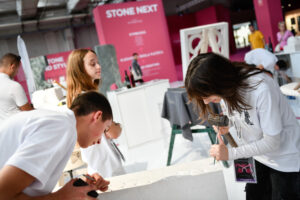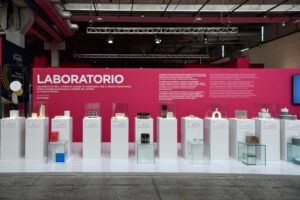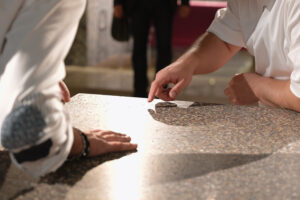Marmomac 2025: Italian natural stone greener than ever
A one square metre by two centimetre thick slab of Italian natural stone involves the release on average of 13.5 kg of CO₂ into the atmosphere over its life cycle. This data was certified by the first Environmental Product Declaration (EPD) in this sector, developed by Turin Polytechnic University for the Pietra Naturale Autentica (PNA – Authentic Natural Stone) network previewed today at Marmomac, Veronafiere’s techno-stone supply chain exhibition. The result means that marble and other Made in Italy natural stone materials rank among the building materials with the lowest environmental impact.
The analysis considered 15 types of material quarried and processed in various regions of Italy – from the Veneto to Tuscany, Piedmont and Trentino-Alto Adige – evaluating each stage from quarrying to factory processing. Figures confirm natural stone’s green vocation: Producing slabs has a modest impact on air and water, given the almost total absence of chemicals used in the processes.
“EPD results indicate low potential eutrophication and acidification impact of surface water, as well as low release into the atmosphere of photochemical smog and substances harmful to the ozone layer,” explained Claudia Chiappino, a mining engineer specialising in quarry activities and circular processes. Energy, in quarries and processing plant alike, plays a significant role in terms of overall impact at around 80%. This suggests that further reductions could be achieved by using cleaner sources of power, such as renewables, and increasing processing yields with a view to circularity.”
Sustainability was also explored during Marmomac 2025 through design and architectural experimentation. The Plus Theatre hosted the Stone Next – Visions of Future Stone exhibition of projects that open out new perspectives. Fili Pari, a startup based in Milan, has patented MARMORE® – a waterproof and high-strength technical fabric made using recycled marble powder. The Federal Institute of Technology in Zurich, on the other hand, presented Stone 3D Printing, a system capable of integrating digital design, structural engineering, and technology to print large-scale architectural components using 80% recycled stone and low-impact binders. Symbiosis – Lichen & Stones highlighted Julia Schwarz’s lichens as bio-indicators of clean air, becoming an integral part of stone structures, turning them into a living and constantly evolving habitat.
“We are convinced that natural stone can be an example of ‘true’ sustainability, not only in relation to its intrinsic material qualities but also as regards the special features of its production cycle, “ said Barbara Ferro, CEO of Veronafiere. “The first Natural Stone Sustainability Manifesto promoted by the PNA Network, of which we are a member, was signed precisely here at Marmomac in 2022 EPD today represents is yet another step forward: it provides transparent environmental data capable of guiding the choices of B2B stakeholders, such as construction companies and architects, as well as consumers. Veronafiere is also working to ensure more visibility at its events for innovative sustainability solutions, not only in environmental terms but also in social spheres involving, for example, safety in the workplace and the new circular economies.”




